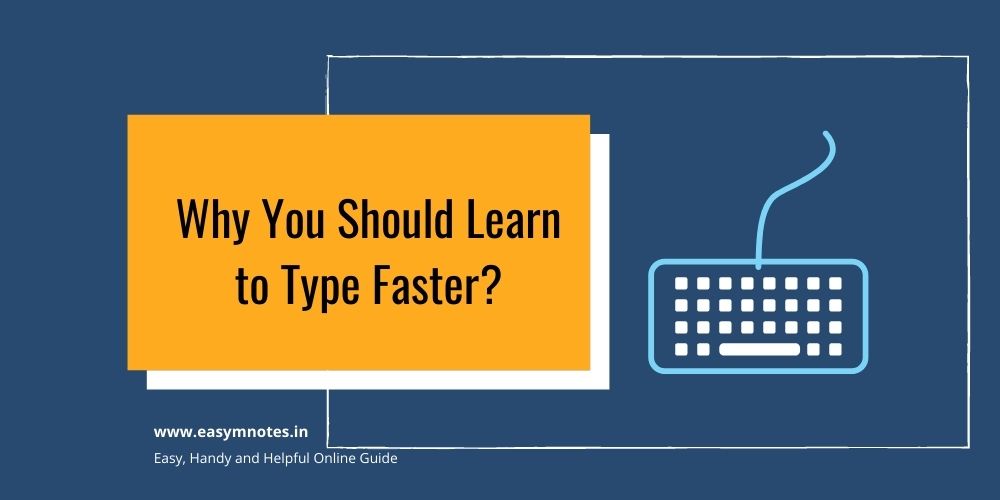

Imagine having to submit a book review for your English class and a research proposal to your Physics professor next week. Imagine all the time you need to invest to get each of the contents done. Do you still have the luxury to virtually turn these into narratives and proposals? Even if you agree that you type while forming your thoughts, there are still some who opt for paper-and-pen before digitizing (e.g. journalists). So wouldn’t it be easier if typing was the least of your time-management problems?
In this age of technology you need to improve typing speed ‘cause being a fast typer is nothing but a global asset. Typing is now a leading medium of writing and communication – even in technical development such as in softwares – that helps in transmitting information. Most, if not all, prefer to keep type-written documents as these are usually in standard form with highly-readable font, perfectly aligned sentences with minimal grammatical errors, no erasures and are relatively insusceptible to document-degradation (when your documents become plain paper over time).
But personally, how is being a fast typer an advantage to you?
1. You can submit your documents on time.
For students who materialize literature reviews, and employees who submit business proposals and other regular reports to impress their employers, one might find typing the biggest challenge – after all! Why? The time it takes you to produce the content of your document does not, you realize, include the time you need to type it (albeit leisurely). And so you cram, with several words in your typing software with red wiggly lines underneath them, some phrases that the software apparently referred to as incorrect grammar, your graphics forcefully (and tragically) fitting themselves in between sentences, and your printer choosing that moment to print differently than what is on your display monitor.
The number of words you can type per unit time affects your submission punctuality. Significantly. If you can type, say, 20 words per minute, and you are assigned a 1000-word film review, it would take you 50 minutes (almost an hour!) to complete typing. In today’s standards, 50 minutes is already a time too long spent only through typing a thousand words especially if you combine the time it took you to formulate the composition.
Being a fast typer, typing not necessarily at the speed of light, will put you in a situation where you can focus on the content of your material and where a soft copy is indeed not a concern at all.
If you are a total beginner at typing, slowly familiarizing the QWERTY keyboard can save you time from searching where is which letter and eventually guide which of your fingers go to which set of letters (touch typing). Intermediate typers learn “sticky keys” of certain typing softwares to type more efficiently (e.g. switching from document to document, pasting only straight-up values and excluding formulas).
Confident on your typing skills?
2. You can focus on your work instead of on the keyboard.
If one indeed forms their thoughts while typing, their thinking process may be diverted to trivial matters such as typing. Imagine yourself while typing your document wherein each time you raise your fingers and look for the next letter, or in each interval that slow typing generates, your mind can wander towards thoughts that are unrelated to the immediate subject at hand. Remember that the mind is a fast-performing organ that is even faster than the common senses. Hence, distractions due to slow typing is detrimental to the completion of the project which can cost you time and disturbance. Smooth-paced typing minimizes these distractions and allows the writer to concentrate their mind on not only digitizing their project but also on perfecting the content of their work (editing/proofreading).
3. You can type your work to perfection.
Most writers find themselves editing their materials before submission. Some revise for elaboration as new thoughts and arguments may be formed by the active brain, some retype for omission due to redundancy, word count and budget constraints (e.g. for authors), and some edit for checking grammatical and structure-checking (proofreading). Basically, ideas may arise during typing. When you are unsatisfied with your article after typing the whole thing, good typing speed gives you have enough time to polish your document and impress not only your peers, but also yourself.
About Author :
My name is Adam Fort, I’m an education strategist at Ratatype.com. This project helps children and adults to learn touch typing via an online typing test and lessons. I am in charge of developing the proper typing lessons and exercise for typists who want to improve their typing speed. I also have a commercial pilot’s licence which I’m proud of.
- How to Succeed in MBA Entrance Exams 2025: Secrets and Strategies - January 18, 2025
- Challenges of Integrated Marketing Communication - October 27, 2024
- What Does A Business Development Manager Do? - April 8, 2024
